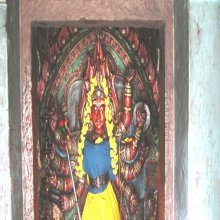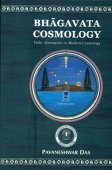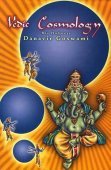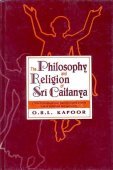Acarya, Ācārya, Ācarya: 36 definitions
Introduction:
Acarya means something in Buddhism, Pali, Hinduism, Sanskrit, Jainism, Prakrit, the history of ancient India, Marathi, Hindi. If you want to know the exact meaning, history, etymology or English translation of this term then check out the descriptions on this page. Add your comment or reference to a book if you want to contribute to this summary article.
Alternative spellings of this word include Acharya.
Images (photo gallery)
In Hinduism
Vaishnavism (Vaishava dharma)
Source: ISKCON Press: GlossaryĀcārya (आचार्य).—A spiritual master who teaches by his own example, and who sets the proper religious example for all human beings.
Source: Pure Bhakti: Bhagavad-gita (4th edition)Ācārya (आचार्य) refers to “spiritual preceptor, one who teaches by example”. (cf. Glossary page from Śrīmad-Bhagavad-Gītā).
Source: Pure Bhakti: Bhajana-rahasya - 2nd EditionĀcārya (आचार्य) refers to:—Spiritual preceptor, one who teaches by example. (cf. Glossary page from Bhajana-Rahasya).
Source: Pure Bhakti: Brhad BhagavatamrtamĀcārya (आचार्य) refers to:—Spiritual preceptor; guru; one who teaches by his life’s example. (cf. Glossary page from Śrī Bṛhad-bhāgavatāmṛta).

Vaishnava (वैष्णव, vaiṣṇava) or vaishnavism (vaiṣṇavism) represents a tradition of Hinduism worshipping Vishnu as the supreme Lord. Similar to the Shaktism and Shaivism traditions, Vaishnavism also developed as an individual movement, famous for its exposition of the dashavatara (‘ten avatars of Vishnu’).
Purana and Itihasa (epic history)
Source: Cologne Digital Sanskrit Dictionaries: The Purana IndexĀcārya (आचार्य).—Qualifications of; old, selfless, highly learned, humble, well disciplined, truthful, etc.; he who by himself follows the rules of good conduct and thus establishes the ācāra and thinks of the truth of the śāstra by yamas and niyamas.*
- * Brahmāṇḍa-purāṇa II. 32. 30-32; IV. 8. 5; Matsya-purāṇa 145. 28-29; Vāyu-purāṇa 59. 28-30.

The Purana (पुराण, purāṇas) refers to Sanskrit literature preserving ancient India’s vast cultural history, including historical legends, religious ceremonies, various arts and sciences. The eighteen mahapuranas total over 400,000 shlokas (metrical couplets) and date to at least several centuries BCE.
Shaivism (Shaiva philosophy)
Source: Wisdom Library: ŚaivismĀcārya (आचार्य) refers to the “Śaiva preceptor”, whereas śiṣya refers to the “disciple”. The preceptor is of three types, according to Nigamajñāna (Śaiva teacher of the 16th century) in his Śaivāgamaparibhāṣāmañjarī:
- Preraka,
- Bodhaka,
- Muktida (or, Mokṣada)
There are five kinds of external marks of an ācārya:
- bhasma (‘holy ash’),
- rudrākṣa (rosary of seeds),
- upavīta (‘sacred thread’),
- uttarīya (‘upper garment’),
- uṣṇīṣa (‘turban’).
The following are the three types of rites ācāryas are qualified to perform:
- Nitya (includes snāna, tarpaṇa, śivapūjā, agnikārya, etc.),
- Naimittika (includes pratiṣṭhā, dīkṣā, and teaching of the Āgamas),
- Kāmya (includes japa).
Ācārya (आचार्य).—According to the Suprabhedāgama he who is born in the family of an ādiśaiva, establishedi n pañcagocara, is a knower of all śāstras and specially devoted to the Śaiva lore (śivajñāna), worshipper of Śiva, fire (agni) and guru, aged between sixteen and seventy, possessing firm and well established knowledge in the subjects of rites (kriyā) and doctrine (jñāna) in a particular text of the tradition (tantra), expert in the section dealing with rites (kriyāpāda) of the āgama, regularly practising the conducts as found in the section on conduct (caryāpāda) and the yogapāda and who has full interest in the doctrinal section (jñānapāda) of the āgamas is qualified to be an ācārya.
The Mataṅgapārameśvara insists that he should be firmly devoted to the śivaśāstra and fully averse to the material sciences (paśuśāstra).
The Raurava prescribes that the ācārya should be well conversant in the system of grammar (pada), Mīmāṃsā (vākya) and Nyāya (pramāṇa).
Source: Shodhganga: Temple management in the ĀgamasĀcārya (आचार्य) refers to a Śaiva initiate who underwent the Ācārya-abhiṣeka, as defined in Dīkṣā (initiation) hierarchy.—Dīkṣā also gives rise to four broad hierarchies, depending on the ritual performed and the resulting spiritual progress. Samaya and Viśeṣa dīkṣā lead an initiate up to the rudra-tattva and īśvara-tattva. These initiates are called Samayī. In Nirvāṇa-dīkṣā, special processes cut the kārmic bonds and other bondages, making him a Putraka. Abhiṣeka with the sādhyamantra, along with other rituals, makes him a Sādhaka. Abhiṣeka with all mantras, along with other rituals, makes the Sādhaka an Ācārya. Each level of dīkṣā bestows certain rights and responsibilities on the initiate. The Sādhaka and Ācārya can perform all nitya, naimittika and kāmya-pūjā.
Ācārya is a term that denotes the Ādiśaiva who has undergone all the levels of dīkṣā, is learned in the Āgama and is advanced in the spiritual practices. He is qualified to perform any and all ritual associated with the temple. The Āgamas proclaim, “ācāryassarvādhikārī”. One of the unique privileges and responsibilities of the ācārya is that he alone can perform dīkṣā for others. Hence, the Ācārya is also known as the Guru. [...] The Samayī, Putraka and Sādhaka all work under the Ācārya and assist him in different ways during the pūjā. They are all under a sort of apprenticeship, getting trained formally as well as by observation.
In the temple, the Ādiśaiva priests are classified by the Āgama into five levels—Ācārya, Arcaka, Sādhaka, Alaṅkṛta and Vācaka. [...] The Ācārya is “sarvādhikāri” and is qualified to perform all rituals in the temple including nitya, naimittika, kāmya-pūjā. If he is indisposed, his son or disciple is qualified to perform the worship on his behalf.

Shaiva (शैव, śaiva) or Shaivism (śaivism) represents a tradition of Hinduism worshiping Shiva as the supreme being. Closely related to Shaktism, Shaiva literature includes a range of scriptures, including Tantras, while the root of this tradition may be traced back to the ancient Vedas.
Natyashastra (theatrics and dramaturgy)
Source: Wisdom Library: Nāṭya-śāstraĀcārya (आचार्य, “professor”) refers to a specific “mode of address” (nāman) used in drama (nāṭya), according to Nāṭyaśāstra chapter 19. Ācārya is used to address the teacher.

Natyashastra (नाट्यशास्त्र, nāṭyaśāstra) refers to both the ancient Indian tradition (shastra) of performing arts, (natya—theatrics, drama, dance, music), as well as the name of a Sanskrit work dealing with these subjects. It also teaches the rules for composing Dramatic plays (nataka), construction and performance of Theater, and Poetic works (kavya).
Kavya (poetry)
Source: Shodhganga: The Kavyamimamsa of RajasekharaĀcārya (आचार्य) is the name of an important person (viz., an Ācārya or Kavi) mentioned in Rājaśekhara’s 10th-century Kāvyamīmāṃsā.—In the Kāvyamīmāṃsā, YV Rājaśekhara used the word Ācāryas have been quoted in twenty-three times. It may be possible that this word Rājaśekhara used for his ancient rhetoricians like Bhāmaha, Vāmana, Daṇḍin, Ānandavardhana etc.

Kavya (काव्य, kavya) refers to Sanskrit poetry, a popular ancient Indian tradition of literature. There have been many Sanskrit poets over the ages, hailing from ancient India and beyond. This topic includes mahakavya, or ‘epic poetry’ and natya, or ‘dramatic poetry’.
Vyakarana (Sanskrit grammar)
Source: Wikisource: A dictionary of Sanskrit grammarĀcārya (आचार्य).—Preceptor, teacher; a designation usually given to Pāṇini by Patañjali in the Mahābhāṣya; cf. the usual expression तज्ज्ञापयति आचार्यः (tajjñāpayati ācāryaḥ) as also आचार्यप्रवृत्तिर्ज्ञापयति (ācāryapravṛttirjñāpayati); also cf. नेदानीमाचार्याः सूत्राणि कृत्वा निवर्तयन्ति (nedānīmācāryāḥ sūtrāṇi kṛtvā nivartayanti); cf. also the popular definition of आचार्य (ācārya) given as 'निशम्य यद्गिरं प्राज्ञा अविचार्यैव तत्क्षणम् । संभावयन्ति शिरसा तमाचार्यं प्रचक्षते । (niśamya yadgiraṃ prājñā avicāryaiva tatkṣaṇam | saṃbhāvayanti śirasā tamācāryaṃ pracakṣate |) "

Vyakarana (व्याकरण, vyākaraṇa) refers to Sanskrit grammar and represents one of the six additional sciences (vedanga) to be studied along with the Vedas. Vyakarana concerns itself with the rules of Sanskrit grammar and linguistic analysis in order to establish the correct context of words and sentences.
Dharmashastra (religious law)
Source: Knowledge Traditions & Practices of India: Education: Systems & PracticesĀcārya (आचार्य, “teacher”) forms part of the ancient Indian education system, which aimed at both the inner and the outer dimension of a person. A given teacher-student relationship obtained in Indian culture. The teacher, the Guru, the Ācārya, was highly honoured and was seen as the guide who helped students escape the darkness of ignorance and attain the light of knowledge. The teacher’s house was the centre of the ācāryakula, the gurukula. The student and the teacher had a symbiotic relationship and students were treated as members of the teacher’s family.

Dharmashastra (धर्मशास्त्र, dharmaśāstra) contains the instructions (shastra) regarding religious conduct of livelihood (dharma), ceremonies, jurisprudence (study of law) and more. It is categorized as smriti, an important and authoritative selection of books dealing with the Hindu lifestyle.
Shaktism (Shakta philosophy)
Source: Google Books: ManthanabhairavatantramĀcārya (आचार्य) refers to a “(spiritual) teacher”, according to the Manthānabhairavatantra, a vast sprawling work that belongs to a corpus of Tantric texts concerned with the worship of the goddess Kubjikā.—Accordingly, “How is (the conduct of) the follower of the Rule (samayin), the spiritual son (putraka) and the adept (sādhaka)? (What is) the state of the teacher (ācārya)? In brief, (what is) the teaching concerning the four stages of life (āśrama)”.

Shakta (शाक्त, śākta) or Shaktism (śāktism) represents a tradition of Hinduism where the Goddess (Devi) is revered and worshipped. Shakta literature includes a range of scriptures, including various Agamas and Tantras, although its roots may be traced back to the Vedas.
Arthashastra (politics and welfare)
Source: Brill: Śaivism and the Tantric Traditions (artha)Ācārya (आचार्य) refers to “one’s teacher”, according to the Arthaśāstra verse 1.9.9-10.—Accordingly, “He should appoint as chaplain a man who comes from a very distinguished family and has an equally distinguished character, who is thoroughly trained in the Veda together with the limbs, in divine omens, and in government, and who could counteract divine and human adversities through Atharvan means. He should follow him as a pupil his teacher (ācārya), a son his father, and a servant his master”.

Arthashastra (अर्थशास्त्र, arthaśāstra) literature concerns itself with the teachings (shastra) of economic prosperity (artha) statecraft, politics and military tactics. The term arthashastra refers to both the name of these scientific teachings, as well as the name of a Sanskrit work included in such literature. This book was written (3rd century BCE) by by Kautilya, who flourished in the 4th century BCE.
Ganitashastra (Mathematics and Algebra)
Source: archive.org: Hindu MathematicsĀcārya (आचार्य) refers to a “learned professor”, according to the principles of Bījagaṇita (“algebra” or ‘science of calculation’), according to Gaṇita-śāstra, ancient Indian mathematics and astronomy.—According to Brahmagupta in the Brāhmasphuṭasiddhānta: “By knowing the pulveriser, zero, negative and positive quantities, unknowns, elimination of the middle term, equations with one unknown, factum and the Square-nature, one becomes the learned professor (ācārya) amongst the learned”.

Ganitashastra (शिल्पशास्त्र, gaṇitaśāstra) refers to the ancient Indian science of mathematics, algebra, number theory, arithmetic, etc. Closely allied with astronomy, both were commonly taught and studied in universities, even since the 1st millennium BCE. Ganita-shastra also includes ritualistic math-books such as the Shulba-sutras.
General definition (in Hinduism)
Source: WikiPedia: HinduismĀchārya (आचार्य): Teacher or Guru.
In Buddhism
Tibetan Buddhism (Vajrayana or tantric Buddhism)
Source: Brill: Śaivism and the Tantric Traditions (tantric Buddhism)Ācārya (आचार्य) refers to the “Tantric officiant”, according to Kuladatta’s Kriyāsaṃgrahapañjikā, a text within Tantric Buddhism representing a construction manual for monasteries.—Accordingly, [nimittokti section of chapter 3]—“If someone, either the Tantric officiant [i.e., Ācārya], a craftsman [involved in the rite], the donor or his officials scratches his head [in the site for a monastery etc.], then there is an extraneous thing [that causes a calamity at a depth of] the full height of a man underground”.

Tibetan Buddhism includes schools such as Nyingma, Kadampa, Kagyu and Gelug. Their primary canon of literature is divided in two broad categories: The Kangyur, which consists of Buddha’s words, and the Tengyur, which includes commentaries from various sources. Esotericism and tantra techniques (vajrayāna) are collected indepently.
In Jainism
General definition (in Jainism)
Source: Google Books: Jaina IconographyĀcārya (आचार्य).—Ācāryas are those who practise (āyaramāṇa) the five-fold ācāra, and instruct others in the rules of conduct (ācāra), constituted of darśana, jñāna, tapa, and vīrya. They are endowed with 36 qualities. The ācāryas are heads of groups of Jaina monks (gacchas), and include the gaṇadharas and so on.
Source: archive.org: TrisastisalakapurusacaritraĀcārya (आचार्य) refers to the “head of a group of monks” and represents one of the ten persons suitable for rendering services, according to chapter 1.1 [ādīśvara-caritra] of Hemacandra’s 11th century Triṣaṣṭiśalākāpuruṣacaritra: an ancient Sanskrit epic poem narrating the history and legends of sixty-three illustrious persons in Jainism.—Accordingly, “[...] Vajranābha acquired strong Tirthakṛt-body-making and family-karma by the twenty sthānakas as follows:—[...] The sixteenth sthāna is the rendering of service by food, drink, etc., to the ten persons, Ācārya, etc. [...]”.
Note: The 10 persons entitled to service are; [viz., Ācārya (head of a group of monks);].—(cf. Aupapātikasūtra 20, p. 43. Sthānāṅgasūtra 397, p. 299. Āvaśyakasūtra 176-78, p. 161b). [...] These 10 persons are entitled to 13 kinds of service: giving of food; of drink; giving a seat; supplying anything that may be lacking in his equipment; cleansing the feet; giving of clothes; giving of medicine; escort on the road; protection from rogues, thieves, etc.; taking the staff when he enters the house; and 3 kinds of sanitary service.—(cf. Āvaśyakasūtra p. 161b).
Source: Jain eLibrary: 7th International Summer School for Jain StudiesĀcārya is the spiritual guide and the head of the monastic order. He should also be a proficient in his own philosophical principles as well as other’s philosophies.
Source: Encyclopedia of Jainism: Tattvartha Sutra 9: Influx of karmasĀcārya (आचार्य).—One of the ten types of ‘nursing services’ (vaiyāvrata)? Who is called ‘the head of congregation’ (ācārya)? An ascetic who is a practiser of five types of specific conduct himself and guides other ascetics to do the same is called the head of congregation.
Source: academia.edu: The Original Paṇhavāyaraṇa/Praśnavyākaraṇa DiscoveredĀcārya (आचार्य) (Sanskrit; in Prakrit: Āyariya) refers to “teachers”, as taught in the Paṇhavāgaraṇa: (Sanskrit: Praśnavyākaraṇa), according to the Sthānāṅgasūtra (Sūtra 755).—The Paṇhavāgaraṇa is the tenth Anga of the Jain canon which deals with the prophetic explanation of queries regarding divination.

Jainism is an Indian religion of Dharma whose doctrine revolves around harmlessness (ahimsa) towards every living being. The two major branches (Digambara and Svetambara) of Jainism stimulate self-control (or, shramana, ‘self-reliance’) and spiritual development through a path of peace for the soul to progess to the ultimate goal.
India history and geography
Source: Cologne Digital Sanskrit Dictionaries: Indian Epigraphical GlossaryĀcārya.—(EI 33; BL), title of a religious teacher; used commonly by the Buddhists and Jains (LL; SII 1). (CII 3; EI 32; ML), a spiritual guide or teacher; a preceptor. [?] Same as Sthāna-acārya (EI 17), a temple priest. (EI 8; IA 14), an architect; used in the sense of ‘a master’, i. e. ‘a master-mason’; cf. Ācāri (EI 17), an artisan. Pāli Ācariya is explained as ‘a master goldsmith’ in the P. T. S. Pāli-Eng. Dict. (LL), title of a sculptor. (HA; IA 19), Jain; a Sādhu who has the right of both reading the sacred texts publicly and explaining them authoritatively. Note: ācārya is defined in the “Indian epigraphical glossary” as it can be found on ancient inscriptions commonly written in Sanskrit, Prakrit or Dravidian languages.

The history of India traces the identification of countries, villages, towns and other regions of India, as well as mythology, zoology, royal dynasties, rulers, tribes, local festivities and traditions and regional languages. Ancient India enjoyed religious freedom and encourages the path of Dharma, a concept common to Buddhism, Hinduism, and Jainism.
Languages of India and abroad
Marathi-English dictionary
Source: DDSA: The Molesworth Marathi and English Dictionaryācārya (आचार्य).—m (S) A spiritual guide or teacher: he who invests with the sacrificial thread, and instructs in the Vedas and in religious mysteries. 2 A conductor of religious ceremonies. 3 A founder or leader of a religious order or sect. 4 It is affixed, as our word Doctor is prefixed, to the names of learned men: as rāghavācārya, rāmācārya.
Source: DDSA: The Aryabhusan school dictionary, Marathi-Englishācārya (आचार्य).—m A spiritual guide. A founder of a religious sect.
Marathi is an Indo-European language having over 70 million native speakers people in (predominantly) Maharashtra India. Marathi, like many other Indo-Aryan languages, evolved from early forms of Prakrit, which itself is a subset of Sanskrit, one of the most ancient languages of the world.
Sanskrit dictionary
Source: DDSA: The practical Sanskrit-English dictionaryĀcarya (आचर्य).—pot. p. To be done, performed, followed, observed &c.; fit, right.
See also (synonyms): ācaraṇīya, ācaritavya.
--- OR ---
Ācārya (आचार्य).—[ā-car-ṇyat P.III.1.1 Vār. Kāś.]
1) A teacher or preceptor (in general).
2) A spiritual guide or preceptor, holy teacher (one who invests a boy with the sacred thread, instructs him in the Vedas &c.); उपनीय तु यः शिष्यम् वेदमध्यापयेद् द्विजः । सकल्पं सरहस्यं च तमाचार्यं प्रचक्षते (upanīya tu yaḥ śiṣyam vedamadhyāpayed dvijaḥ | sakalpaṃ sarahasyaṃ ca tamācāryaṃ pracakṣate) Manusmṛti 2.14; cf. also आचिनोति च शास्त्रार्थं आचारे स्थापयत्यपि । स्वयमाचरते यस्तु स आचार्य इति स्मृतः (ācinoti ca śāstrārthaṃ ācāre sthāpayatyapi | svayamācarate yastu sa ācārya iti smṛtaḥ) || read also वेदाध्यापनेन च आचार्यो भवति (vedādhyāpanena ca ācāryo bhavati) Manusmṛti 6.1.35; see अध्यापक (adhyāpaka) also.
3) One who propounds a particular doctrine.
4) (When affixed to proper names) Learned, venerable (somewhat like the English Dr.).
5) An adviser or preceptor at a sacrifice &c.
6) An epithet of Droṇa; आचार्यमुपसंगम्य राजा वचनमब्रवीत् (ācāryamupasaṃgamya rājā vacanamabravīt) Bhagavadgītā (Bombay) 1.2.
7) A degree or title of proficiency.
-ryā A female preceptor, a spiritual preceptress.
Derivable forms: ācāryaḥ (आचार्यः).
Source: Cologne Digital Sanskrit Dictionaries: Shabda-Sagara Sanskrit-English DictionaryĀcarya (आचर्य) or Ācaryya.—mfn.
(-ryaḥ-ryā-ryaṃ) To be gone to or approached. E. āṅ before car to go, yat aff.
--- OR ---
Ācārya (आचार्य) or Ācāryya.—m.
(-ryaḥ) 1. A spiritual guide or teacher; he who invests the student with the sacrificial thread, and instructs him in the Vedas, the law of sacrifice, and religious mysteries. 2. A name of Drona, the teacher of the Pandus. f.
(-ryā) A spiritual preceptress. f. (-ryāṇī) The wife of an A'charya or holy teacher. E. āṅ before car to go, ṇyat affix, in the fem. ṭāp or ṅīp with ānuk inserted.
Source: Cologne Digital Sanskrit Dictionaries: Benfey Sanskrit-English DictionaryĀcārya (आचार्य).—i. e. ācāra + ya, m. A spiritual guide or teacher; he who invests the student with the sacrificial thread and instructs him in the Vedas, etc., [Mānavadharmaśāstra] 2, 40.
Source: Cologne Digital Sanskrit Dictionaries: Cappeller Sanskrit-English DictionaryĀcārya (आचार्य).—[masculine] teacher, spiritual guide (poss. vant; [abstract] tā† [feminine], tva† [neuter]); a cert. caste.
Source: Cologne Digital Sanskrit Dictionaries: Monier-Williams Sanskrit-English Dictionary1) Ācarya (आचर्य):—[=ā-carya] [from ā-car] mfn. to be approached, [Pāṇini 3-1, 100] [commentator or commentary]
2) [v.s. ...] = ā-caraṇīya q.v., [Pāṇini 6-1, 147 [Scholiast or Commentator]]
3) Ācārya (आचार्य):—[from ā-car] a m. ‘knowing or teaching the ācāra or rules’, a spiritual guide or teacher (especially one who invests the student with the sacrificial thread, and instructs him in the Vedas, in the law of sacrifice and religious mysteries [Manu-smṛti ii, 140; 171]), [Atharva-veda; Śatapatha-brāhmaṇa] etc.
4) [v.s. ...] a Name of Droṇa (the teacher of the Pāṇḍavas), [Bhagavad-gītā i, 2]
5) [v.s. ...] (also) the son of an outcast Vaiśya and a Vaiśyā who was before a Brāhman’s wife, [Manu-smṛti x, 23 ]([according to] to some, read cārya)
6) Ācāryā (आचार्या):—[from ācārya > ā-car] f. a spiritual preceptress, [Pāṇini 4-1, 49; Siddhānta-kaumudī] [The title ācārya affixed to names of learned men is rather like our ‘Dr.’; e.g. rāghavācārya, etc.]
7) Ācārya (आचार्य):—[from ā-cāra] b etc. See, [ib.]
Source: Cologne Digital Sanskrit Dictionaries: Yates Sanskrit-English Dictionary1) Ācarya (आचर्य):—[ā-carya] (ryyaḥ-ryyā-ryyaṃ) a. To be approached; to be done.
2) Ācārya (आचार्य):—[ā-cārya] (ryyaḥ) 1. m. A spiritual guide or teacher. (ryyā) 1. f. Preceptress. (ryyānī) Wife of a teacher or spiritual guide.
Source: DDSA: Paia-sadda-mahannavo; a comprehensive Prakrit Hindi dictionary (S)Ācārya (आचार्य) in the Sanskrit language is related to the Prakrit word: Āyariya.
[Sanskrit to German]
Sanskrit, also spelled संस्कृतम् (saṃskṛtam), is an ancient language of India commonly seen as the grandmother of the Indo-European language family (even English!). Closely allied with Prakrit and Pali, Sanskrit is more exhaustive in both grammar and terms and has the most extensive collection of literature in the world, greatly surpassing its sister-languages Greek and Latin.
Hindi dictionary
Source: DDSA: A practical Hindi-English dictionaryĀcārya (आचार्य) [Also spelled achary]:—(nm) a teacher, preceptor; professor; founder or leader (of a school of thought); an initiator; hence ~[tva] (nm).
...
Kannada-English dictionary
Source: Alar: Kannada-English corpusĀcārya (ಆಚಾರ್ಯ):—
1) [noun] a wise teacher; a preceptor; a mentor.
2) [noun] a spiritual guide within a particular tradition or sect.
3) [noun] a man whose function is to perform religious rites as an intermediary between deity and worshipers; a priest.
4) [noun] a honorific suffix to the names of venerable, holy or scholarly persons.
5) [noun] ಆಚಾರ್ಯರಿಗೆ ಮಂತ್ರಕ್ಕಿಂತ ಉಗುಳೇ ಜಾಸ್ತಿ [acaryarige mamtrakkimta ugule jasti] ācāryarige mantrakkinta uguḷē jāsti here is great cry but little wool; a deluge of words and a drop of sense.
Kannada is a Dravidian language (as opposed to the Indo-European language family) mainly spoken in the southwestern region of India.
See also (Relevant definitions)
Starts with (+46): Acarya-pitha, Acarya-pujana, Acarya-pujanai, Acaryabhasita, Acaryabhimana, Acaryabhisheka, Acaryabhogina, Acaryacampu, Acaryacaritacintamani, Acaryacatuhshloki, Acaryacudamani, Acaryadeshiya, Acaryadeva, Acaryadura, Acaryaganike, Acaryagopika, Acaryahridaya, Acaryahrutayam, Acaryajaya, Acaryaka.
Ends with (+671): Abhavebrahmacarya, Abhinavadharmabhushanacarya, Abhinavashankaracarya, Abhinavashukracarya, Abhinayacarya, Abrahmacarya, Acalacarya, Acannacarya, Acyutaprekshacarya, Adharmacarya, Aditya acarya, Adityacarya, Adiyogacarya, Advaitacarya, Aghorashiva acarya, Aghorashivacarya, Ajitadevacarya, Ajitasenacarya, Ajivabrahmacarya, Ajnatacarya.
Full-text (+1302): Acaryani, Animishacarya, Acaryahrutayam, Mattuvacariyar, Acaryasava, Acaryakarana, Vittumacari, Acariga, Acariya, Paramacariyan, Candeshapratishtha, Acarjya, Dhimata, Manava, Pracarya, Vrishabhasthapana, Kulacarya, Vardhamanavidya, Simhasanapratishtha, Pratimapratishtha.
Relevant text
Search found 150 books and stories containing Acarya, Ācārya, Ācarya, A-carya, Ā-carya, Ācāryā, Ā-cārya; (plurals include: Acaryas, Ācāryas, Ācaryas, caryas, Ācāryās, cāryas). You can also click to the full overview containing English textual excerpts. Below are direct links for the most relevant articles:
Amarakoshodghatana of Kshirasvamin (study) (by A. Yamuna Devi)
Education (1): Teachers < [Chapter 4 - Cultural Aspects]
Professions, Servants and Employed persons < [Chapter 3 - Social Aspects]
Position of Women < [Chapter 3 - Social Aspects]
Mahabharata (English) (by Kisari Mohan Ganguli)
Section CV < [Anusasanika Parva]
Section CVIII < [Rajadharmanusasana Parva]
Section XXXVII < [Anusasanika Parva]
Jainism and Patanjali Yoga (Comparative Study) (by Deepak bagadia)
Part 6 - Survey of previous research (Literature Review) < [Chapter 1 - Introduction]
Part 5 - Jain scriptures and Spiritual teachers < [Chapter 3 - Jain Philosophy and Practice]
Part 6 - Literature (comparing Yoga and Jainism < [Chapter 4 - A Comparative Study]
Kavyamimamsa of Rajasekhara (Study) (by Debabrata Barai)
Alaṃkāra (2): Śleṣa-Yamaka < [Chapter 3 - Contribution of Rājaśekhara to Sanskrit Poetics]
Alaṃkāra (3): Kāvyārtha-Yoni < [Chapter 3 - Contribution of Rājaśekhara to Sanskrit Poetics]
Part 3.8 - Meaning of Kāvy-pāka (maturity in poetic expression) < [Chapter 5 - Analyasis and Interpretations of the Kāvyamīmāṃsā]
Lakulisha-Pashupata (Philosophy and Practice) (by Geetika Kaw Kher)
Critical rereading of Pasupata-sutra < [Chapter 4 - The Philosophical Context]
Connection between Lakulisa-Pasupatas and Kapalikas < [Chapter 2 - Spread and Transition]
Kalamukhas: The politically organized Saivite ascetics < [Chapter 2 - Spread and Transition]
The backdrop of the Srikanthacarita and the Mankhakosa (by Dhrubajit Sarma)
Related products







